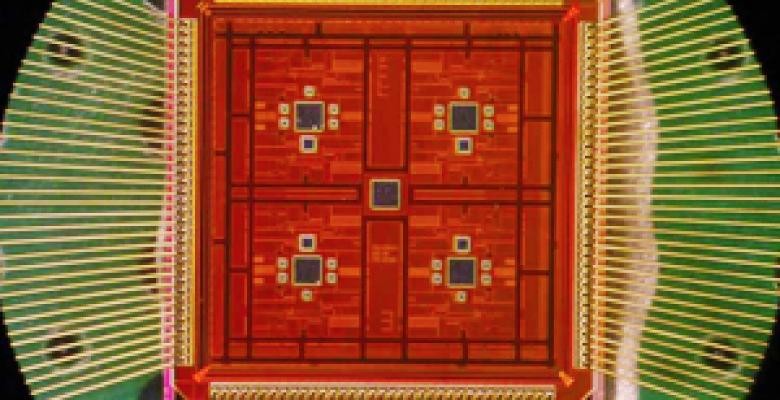Nanotech's Next Frontier: Initiative Brings Disciplines Together for Pioneering Discoveries

The word “nanos” is Greek for dwarf, and over time “nano” has come to refer to anything small, like the iPod nano. In science, however, it has a very precise definition: 10-9, or a billionth.
Nanoscience, then, involves working with the tiniest components in nature. Researchers can examine and build materials one atom or molecule at a time, allowing them to probe the fundamental nature of matter and invent materials with startling new characteristics. It has enormous implications for better electronics, new medical devices and the development of alternative energy sources.
“The development of this new technology over the past decade has brought us to the edge of fantastic new discoveries,” said Michael Purdy, the University’s executive vice president of research. “This is revolutionary. That means that Columbia has to be at the lead, just as we have been in nuclear physics and as we are in climate change.”
Nanoscience also involves an interdisciplinary effort on an unprecedented scale.
In chemistry, Professor Colin Nuckolls focuses on designing and synthesizing new types of molecules with interesting electronic properties that often change at the nanoscale. A founding member of Columbia’s Nanoscience Center, he also is a principal investigator for Columbia’s Energy Frontier Research Center, where he collaborates with engineers, physicists and chemists to create technology to increase solar cell efficiency.
“The nanoscale is a special place in the size of things, where unusual properties emerge, and it’s an area that chemistry, materials science, physics, have all converged on,” said Nuckolls. “You often have big science problems that don’t require a single expertise but require multiple expertise.”
An important puzzle Columbia scientists are working on is how to replace silicon, the material used in semiconductors and myriad electronic products. Philip Kim, a professor of physics and applied physics, is one of the first researchers in the world to focus on graphene, a super-strong membrane that is the thickness of a single carbon atom. It has captured the imagination of scientists, who want to develop practical applications for touchscreens, solar cells and sensors.
“Although the things that we are interested in are very small, I would say the impact could certainly be quite big,” Kim said. “When things become small, they behave quite differently than when they are large, so when you utilize this exceptional property, you can develop systems in different ways than we ever imagined before.”
Columbia’s emphasis on nanoscience will extend to, and indeed will increase at the undergraduate level. In December, a new strategic plan for the nine science departments of Arts and Sciences was presented to the Trustees, at the heart of which were three new interdisciplinary themes. One of them is molecular architecture, from atoms to devices.
“Nanotechnology is at the core of our planned molecular architecture initiative, and already we have great strength in this field, including some of the world’s leaders, at Columbia,” said Amber Miller, a professor of physics and dean of science in the Faculty of Arts and Sciences. Indeed, said Nuckolls, who will head the nanoscience initiative, “The potential for lifechanging science and technology emerging from work on the nanoscale at Columbia is enormous.”
Purdy, a marine geophysicist who was director of the Lamont-Doherty Earth Observatory before becoming head of Columbia research, believes Columbia is uniquely suited to tackle the challenges of nanoscience.
“There are huge, complex ethical issues that come with some of the advances we make in nanoscience,” said Purdy, in part because the science is so new that no one knows how it might be used. “Those developments need to be made in broad-based universities like Columbia, which has social scientists, law professors and philosophers, among others, who can work alongside scientists to understand and articulate the real consequences of their discoveries.”